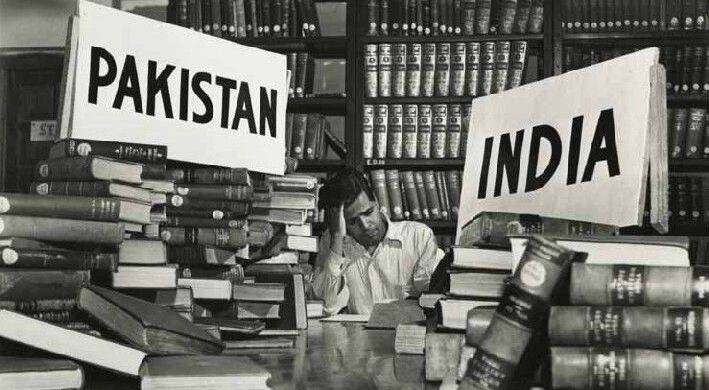
In simple terms, culture is a complex whole – encompassing language, world view, arts, attitudes and rites of life. Religion falls within the ambit of culture: not other way round, as it is usually perceived. In the last couple of centuries, right from inter-cultural alienation and universality of human behaviour, to the clash of civilizations, the idea of culture has been theorized in multiple perspectives.
One thing, however, stands out that where there is diversity and distinction – much is common and exchangeable too between and within cultures and sub-cultures.
Apart from the broader theoretical debates of defining and understanding culture in the classical sense, couple of things are clear: almost all states in the world are multi-cultural; the era of stand-alone, and isolated cultures is over; minority and majority are relative entities depending on the history and origin of the state. But this is so unfortunate that along with maximum means of intermingling, inculturation and acculturation opportunities – incidences of racial and religious hatred and violence are being witnessed far too frequently.
Difficult to understand as a cultural phenomenon but harmony might be identified as a ‘human value’, referring to compatibility and accord in feelings, actions, interactions and opinions. With respect to history and contemporary socio-cultural dimensions, particularly in South Asia, religion is and has been playing a very important role. So much so that based on religious identities the mid-twentieth century partition between India and Pakistan has seen blood-stained atrocities. After a long drawn political struggle, Pakistan and India came into existence with a vision to set up Hindu majority and a Muslim majority ‘secular’ states in the sub-continent – at least the way these were conceived by Gandhi ji and Jinnah sahib.
Splitting from Pakistan, Bangledesh too, hatched similar aspirations. But, contrary to the vision of the architects of these states, minorities within India, Pakistan and Bangladesh, somehow, couldn’t not be awarded equality of citizenship with freedom of religion and belief. Anti-Muslim riots in Delhi and Gujrat (India), thrashing and even slaughtering Muslims over the allegations of cow-slaughter, beating up Christian missionaries for alleged evangelist activities, Ill-treatment and assaulting Christians in Gojra and Youhanabad (Pakistan) and shrinking socio-cultural spaces for Hindu and Buddhist minorities in Bangladesh are select few examples of that.
But this is also true that the region has a long history of living together and thriving with differences and even contradictions. Despite apparent differences much has been common in-between. A range of ethno-lingual and religious communities have been celebrating both differences and similarities since centuries. Spiritual and mystic traditions as well as movements have been striving to create a culture of peace and harmony amongst all. The peace scholar, Elise Boulding, highlights the importance of sustaining and enriching the cultures of peace and harmony. In her understanding, nurturing peace and peace cultures depends on foreseeing a peaceful, plural future - no matter whatever the present state of affairs in a society.
One thing, however, stands out that where there is diversity and distinction – much is common and exchangeable too between and within cultures and sub-cultures.
Apart from the broader theoretical debates of defining and understanding culture in the classical sense, couple of things are clear: almost all states in the world are multi-cultural; the era of stand-alone, and isolated cultures is over; minority and majority are relative entities depending on the history and origin of the state. But this is so unfortunate that along with maximum means of intermingling, inculturation and acculturation opportunities – incidences of racial and religious hatred and violence are being witnessed far too frequently.
Difficult to understand as a cultural phenomenon but harmony might be identified as a ‘human value’, referring to compatibility and accord in feelings, actions, interactions and opinions. With respect to history and contemporary socio-cultural dimensions, particularly in South Asia, religion is and has been playing a very important role. So much so that based on religious identities the mid-twentieth century partition between India and Pakistan has seen blood-stained atrocities. After a long drawn political struggle, Pakistan and India came into existence with a vision to set up Hindu majority and a Muslim majority ‘secular’ states in the sub-continent – at least the way these were conceived by Gandhi ji and Jinnah sahib.
Splitting from Pakistan, Bangledesh too, hatched similar aspirations. But, contrary to the vision of the architects of these states, minorities within India, Pakistan and Bangladesh, somehow, couldn’t not be awarded equality of citizenship with freedom of religion and belief. Anti-Muslim riots in Delhi and Gujrat (India), thrashing and even slaughtering Muslims over the allegations of cow-slaughter, beating up Christian missionaries for alleged evangelist activities, Ill-treatment and assaulting Christians in Gojra and Youhanabad (Pakistan) and shrinking socio-cultural spaces for Hindu and Buddhist minorities in Bangladesh are select few examples of that.
But this is also true that the region has a long history of living together and thriving with differences and even contradictions. Despite apparent differences much has been common in-between. A range of ethno-lingual and religious communities have been celebrating both differences and similarities since centuries. Spiritual and mystic traditions as well as movements have been striving to create a culture of peace and harmony amongst all. The peace scholar, Elise Boulding, highlights the importance of sustaining and enriching the cultures of peace and harmony. In her understanding, nurturing peace and peace cultures depends on foreseeing a peaceful, plural future - no matter whatever the present state of affairs in a society.
